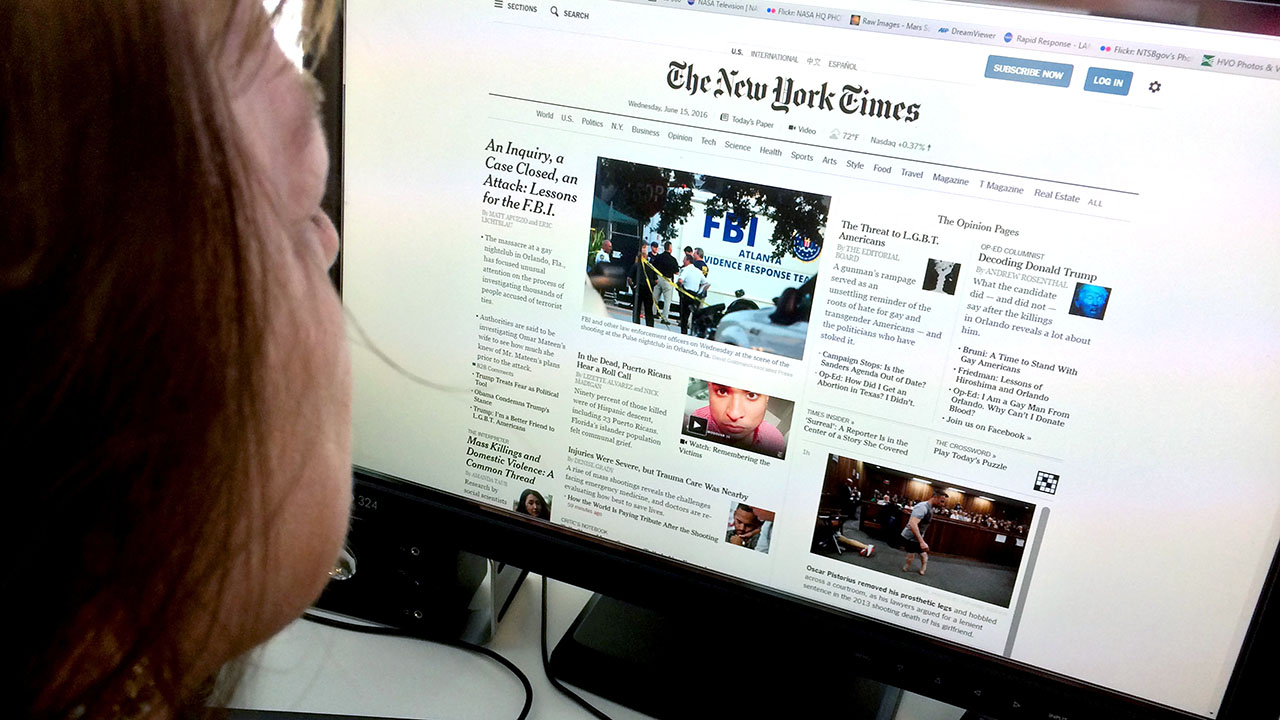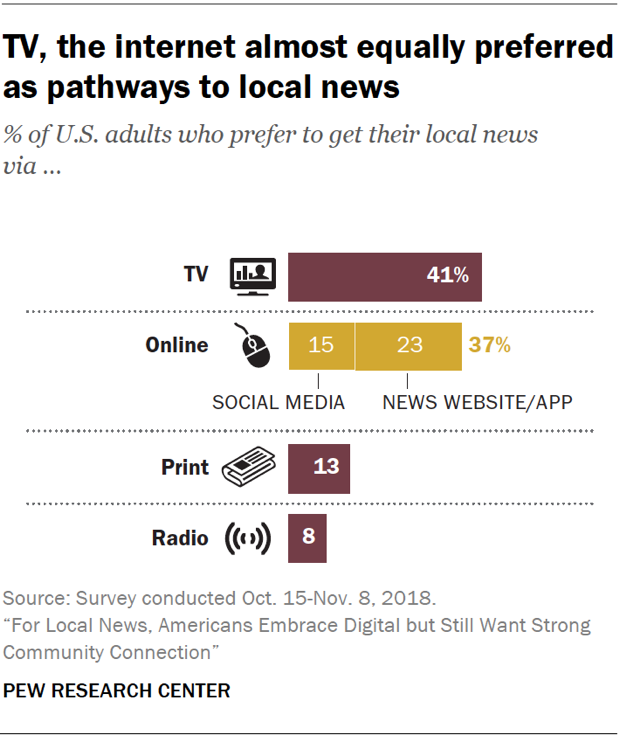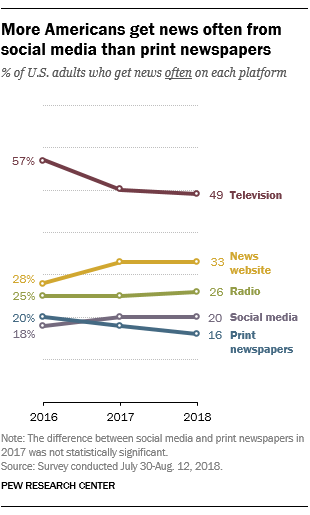
The digital news industry in the United States is facing a complex future. On one hand, a steadily growing portion of Americans are getting news through the internet, many U.S. adults get news on social media, and employment at digital-native outlets has increased. On the other, digital news has not been immune to issues affecting the broader media environment, including layoffs, made-up news and public distrust.
As digital journalists gather for the Online News Association’s annual conference this week in New Orleans, here are some key findings about the way Americans get news online – as well as how digital newsrooms in the U.S. are faring, compiled from recent Pew Research Center surveys and analyses.
1The share of Americans who prefer to get their news online is growing. In 2018, 34% of U.S. adults said they preferred to get news online, whether through websites, apps or social media. That’s compared with 28% in 2016. (Television remains the most popular source of news, with 44% of Americans citing a preference for TV.)
 2Nearly as many Americans prefer to get their local news online as prefer the TV. Roughly four-in-ten U.S. adults (37%) say they prefer to get their local news via online channels, similar to the share that prefers the TV set (41%). About three-quarters (77%) say the internet is important in how they get local news.
2Nearly as many Americans prefer to get their local news online as prefer the TV. Roughly four-in-ten U.S. adults (37%) say they prefer to get their local news via online channels, similar to the share that prefers the TV set (41%). About three-quarters (77%) say the internet is important in how they get local news.
3An easy-to-use website is important to Americans who get local news online. Roughly eight-in-ten Americans who get local news online (82%) say an easy-to-use website is an important feature of an online local news source. Smaller shares say a schedule of local events (59%) and regularly updated social media accounts (51%) are important features.
4Employment in digital newsrooms increased 82% between 2008 and 2018. The number of digital-native newsroom employees increased from about 7,400 to about 13,500 during this 10-year span. This increase of about 6,100 total jobs, however, fell far short of offsetting the loss of about 33,000 newspaper newsroom jobs during the same period. (Overall newsroom employment in the U.S. dropped by 25% from 2008 to 2018, a decrease driven by newspapers.)
5Layoffs have affected digital-native news organizations as well as newspapers in recent years. While layoffs at newspapers have received plenty of media attention, digital-native news outlets have also seen cuts. Among the largest digital-native outlets – those with a monthly average of at least 10 million unique visitors – 14% went through layoffs in 2018 and 20% did the year before. Nearly all the digital-native news outlets that laid off staff in 2017 or 2018 cut more than 10 employees.
 6More Americans get news on social media than from print newspapers. In 2018, one-in-five adults said they often get news on social media. And Facebook continues to dominate as the most common social media site used for news by Americans: About four-in-ten Americans (43%) get news on this site.
6More Americans get news on social media than from print newspapers. In 2018, one-in-five adults said they often get news on social media. And Facebook continues to dominate as the most common social media site used for news by Americans: About four-in-ten Americans (43%) get news on this site.
7Americans are skeptical of the information they see on social media. Even as they regularly turn to social media for news, a majority of those who often get news on social media (57%) say they expect the news they see on these platforms to be largely inaccurate. Concerns about the inaccuracies in news on social media are prevalent even among those who say they prefer to get their news there.
8Made-up news affects how people use social media. Half of Americans (52%) say they have changed the way they use social media because of the issue of made-up news. Furthermore, among the Americans who ever get news through social media, half have stopped following a news source because they thought it was posting made-up news and information. At the same time, about a third (31%) of social media news consumers say they at least sometimes click on news stories they think are made up.



